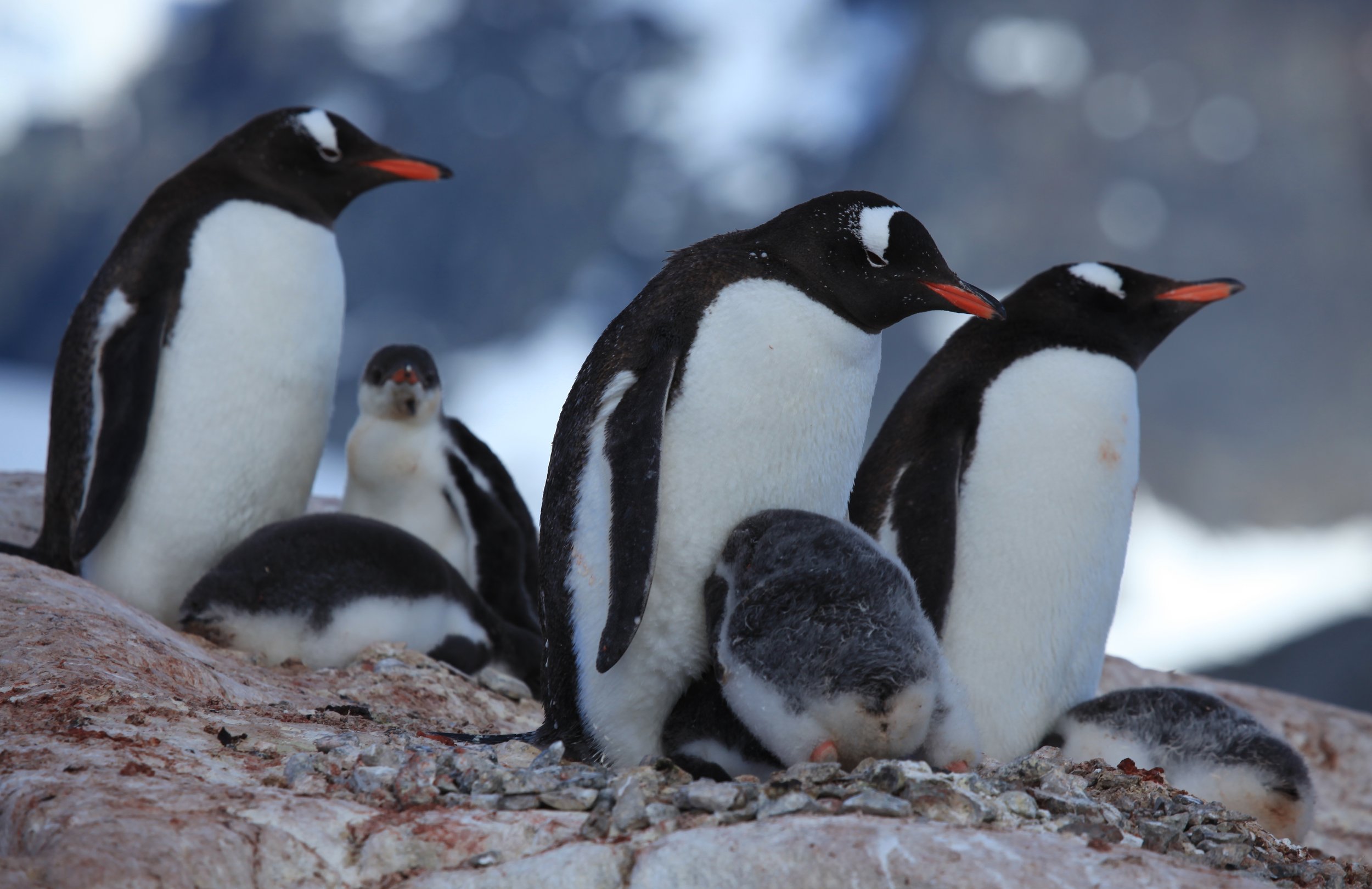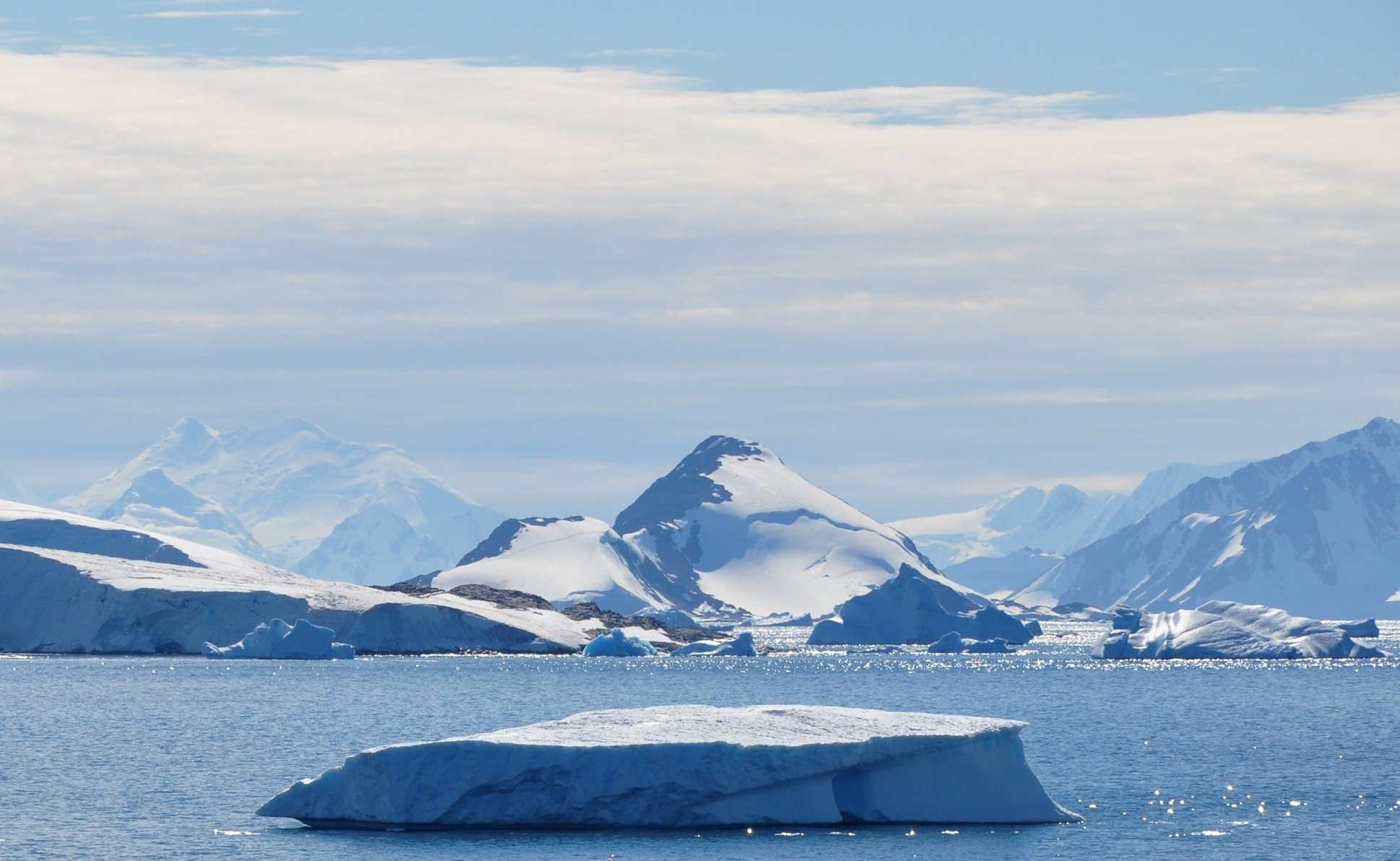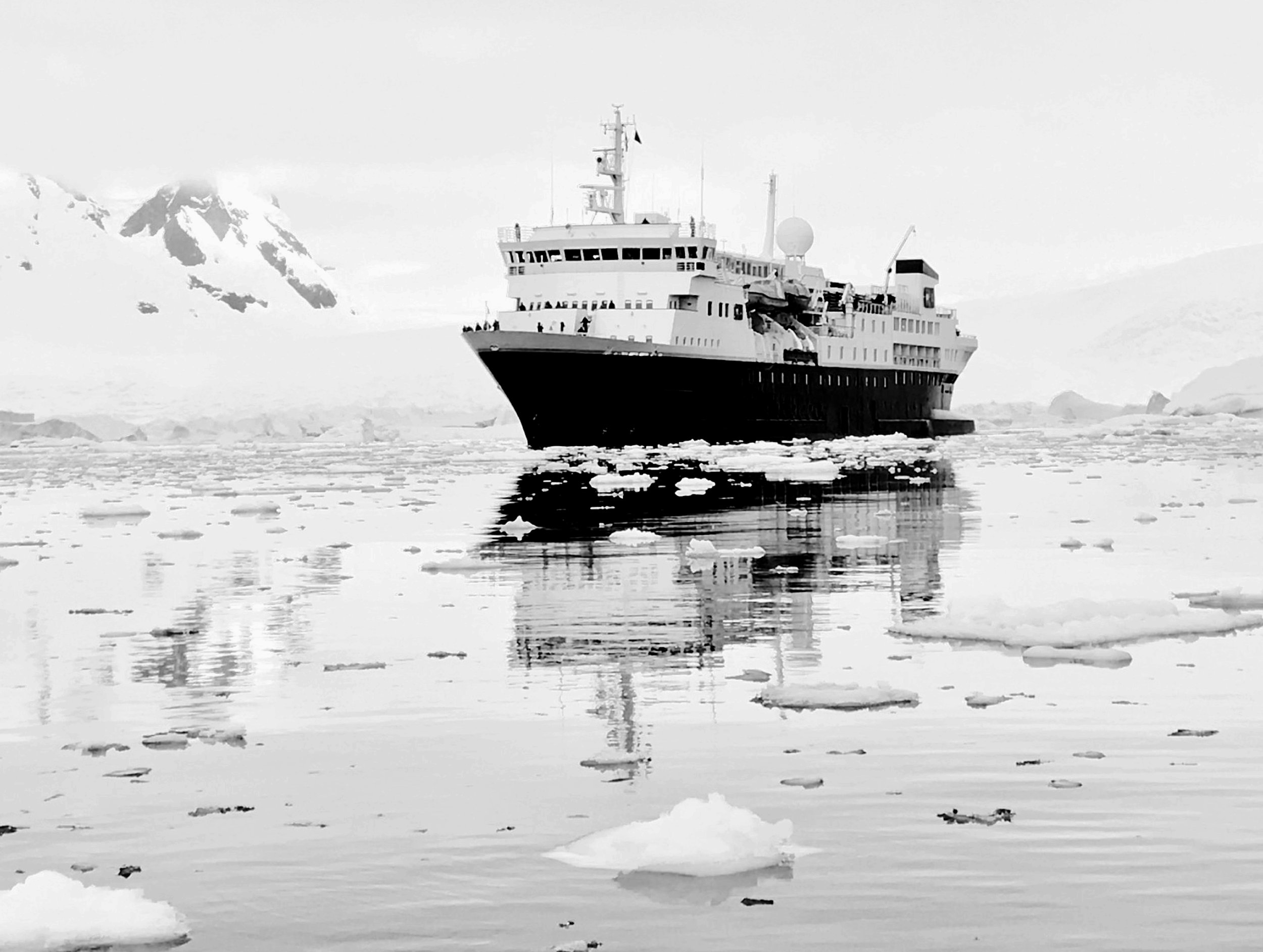Antarctica in June
Antarctica, the southernmost point of our planet, captivates adventurous souls, eco-tourists, and wildlife enthusiasts. In June, this continent reveals a side of itself that is both challenging and rewarding, offering a blend of beauty and wilderness. Whether you're fascinated by this untouched landscape or just want the chance to witness extraordinary wildlife, a trip to Antarctica in June is an unforgettable experience.
In this blog post, we'll explore why June is a compelling time to visit Antarctica, covering everything from the weather conditions and logistical challenges to the top destinations and activities. We'll also provide practical insights to help you make the most of your Antarctic adventure.
Weather in Antarctica in June
Antarctica's weather can be unpredictable, but understanding the climate in June is key to preparing for your trip. June marks the beginning of the continent's transition from the long summer days to the darker, colder autumn and winter months.
Daylight Hours
One of the most intriguing aspects of visiting Antarctica in June is the dramatic change in daylight hours. While the continent experiences near-constant daylight during the summer months, June brings a shift to longer periods of darkness. This transition creates unique opportunities for witnessing breathtaking sunrises and sunsets, as well as the ethereal beauty of the polar twilight.
June has longer periods of darkness and offers a stunning view of the night sky unpolluted by artificial light. Additionally, the chance of seeing the southern lights increases. This natural phenomena creates an unforgettable experience for visitors, showcasing Antarctica's extraordinary beauty and mystery.
Weather Conditions
June in Antarctica is characterized by increasing cold and strong winds, which can make travel challenging. Snowfall is common, and blizzards may occur. Blizzards can affect visibility and accessibility but being in Antarctica during a blizzard seems quite surreal. It's important to be prepared for rapidly changing weather conditions and to follow the guidance of your guides and expedition leaders.
The temperature in June can vary widely depending on your location. The coastal areas of Antarctica may experience milder conditions with temperatures ranging from 14°F to -4°F (-10°C to -20°C). However, as you venture further inland temperatures can be as low as -40°F (-40°C). It's important to pack appropriately to stay warm and comfortable throughout your trip. Check out our blog pos: What to Pack for Antarctica - A Comprehensive Guide for more information on how to pack for your trip.
Challenges and Considerations for June Travel
Traveling to Antarctica in June presents some logistical considerations, such as extreme weather conditions, limited accessibility.. However, with the help of Andrea (www.crafttravel.com/andrea-galvez), these obstacles can be managed effectively, allowing for a safe and unforgettable adventure in one of the most remote and stunning places on Earth.
Weather-Related Delays
Unfortunately, one primary challenge of traveling to Antarctica in June is the potential for weather-related delays. The region's harsh and unpredictable weather can significantly impact travel plans. Flights and ship schedules can be disrupted by adverse weather conditions. Consequently, it's essential to build flexibility into your travel plans. Working with your travel designer mitigate these risks and be prepared for possible delays. Additionally, we always suggest purchasing travel insurance to cover any unforeseen changes or cancellations.
Limited Accessibility
Certain areas of Antarctica may become less accessible in June due to ice and snow accumulation. Some areas and research stations may be inaccessible, possibly and temporarily limiting the activities available to visitors. Expect the unexpected when visiting one of the most remote places in the World.
Safety Precautions
Safety is paramount when traveling to Antarctica, especially during the colder months. Ensure you have the necessary gear and clothing to stay warm and protected from the harsh elements, including insulated jackets, gloves, and waterproof boots. Read our blog post on what to pack here! Follow all safety guidelines provided by your guides and expedition team. Always remember to stay hydrated and be aware of the signs of frostbite and hypothermia. If you're looking for expert advice, consider working with our expert Antarctica travel designer, Andrea, to enhance your journey.
Where to Go in Antarctica in June
While many travelers focus on the more popular regions of Antarctica, this continent has a variety of lesser-known destinations that offer a deep sense of adventure and discovery. Here are ten unique places that you should consider for your June itinerary:
Port Lockroy and the Peninsula
Possibly the most renowned entry point to the Antarctic Peninsula. Port Lockroy becomes a focal point in June becoming the heart of whale spotting territory. During this time the area around Port Lockroy unveils spectacular views of glaciers and vast colonies of penguins. Huddling together, these creatures create a breathtaking spectacle against the icy and butterfly cold backdrop. Making for a truly a once in a lifetime experience.
The Ross Sea
Embarking on a historical journey retracing the steps of the legendary explorer Ernest Shackleton. In the month of June, the Ross Ice Shelf offers onlookers some of the most breathtaking vistas of towering icebergs and wildlife in their natural habitat.
The South Pole
For the purists and the historians embarking on a journey to the South Pole in June represents a monumental effort. It is only here where you can understand the magnitude of what early explorers faced. In this desolate landscape you'll experience the true essence of isolation, the profound silence. The frozen heartbeat of Antarctica not only connects you with the intrepid spirits of past adventurers but also offers a deep insight into the power of the natural world.
The Far East
No matter the month, the massive Adélie penguin population in the far eastern corners of Antarctica is a wondrous sight to behold. These tuxedo-like clade creatures thrive in one of the harshest environments on Earth. In June, when the harsh winter starts to set in and fewer tourists venture this far, the competition for your attention dwindles, making the penguins' playful antics all the more endearing. Watching them waddle on the ice, dive into the frigid waters for food, and interact with one another is an unforgettable experience.
Visiting these lesser-known destinations in June allows for a more solitary and profound connection with the Antarctic wilderness.
What to Do in Antarctica in June
Visiting Antarctica in June opens up a world of activities that cater to the adventurous spirit and the curious mind. Here are some of the top activities to enjoy:
Camping
Imagine spending a night under the spectacular Antarctic sky and being surrounded by the serene sounds of nature. Camping in Antarctica is not for the faint-hearted but it offers a rare opportunity to immerse yourself fully in the continent's unparalleled environment. Providing a sense of intimacy with the landscape that few others experience. As you sleep under a canopy of stars and wake to the crisp, invigorating air of the polar morning you’ll get a full understanding of why this destination is so intriguing.
Hiking
For those looking for a more active experience, hiking in Antarctica provides a unique opportunity to explore this remote continent's rugged landscapes. Using snowshoes or crampons strapped on your boats, you can trek through pristine snowfields and/or glaciers while witnessing breathtaking ice formations and untouched wilderness. The sheer beauty combined with the challenge of navigating such extreme terrain, makes for an unforgettable adventure. Along the way, you may also encounter some of the region's wildlife such as penguins and seals which will add even more wonder to your journey.
Visiting Research Stations
For the intellectually curious and adventurous, visiting one of Antarctica’s research stations offers a captivating glimpse into the cutting-edge science being conducted in one of the planet's most extreme environments. Researchers here focus on diverse fields from glaciology and atmospheric sciences. Engaging with scientists and learning about their work will provide a deeper understanding of the critical research that helps us understand climate change and the global ecosystem.
Wildlife & Natural Phenomena
June in Antarctica offers both unique wildlife and natural phenomena that make this time even more special. You can witness the mesmerizing beauty of the polar landscape, penguins huddling together for warmth and experience the eerie silence of the frozen continent. The long days provide much opportunity for exploration and photography. Additionally, the clear winter skies offer a chance to witness natural phenomena such as shimmering auroras and the surreal midnight sun.
Penguin Colonies
Penguin colonies are bustling with activity in June, as many species begin their breeding season. A vast number of penguins can be seen gathering on the rocky shores and icy landscapes building nests, courting potential mates, and carefully caring for their eggs. Witnessing this give visitors fascinating insights into their behavior and social structure.
Ice Formations
June is the perfect time to witness the creation of ice formations as temperatures drop and the sea begins to freeze. As the cold sets in, crystals start to form on the water's surface, gradually expanding into larger sheets of ice. The process of ice formation results in stunning landscapes with intricate patterns and textures that change daily. Each day presents a new spectacle revealing the incredible beauty of nature's handiwork.
Polar Twilight
The polar twilight in June casts a magical glow over the icy landscape bathing it in ethereal hues of pink and purple. The extended periods of dawn and dusk create soft, diffused light that enhances the beauty of the surroundings. This unique lighting is a photographer's dream. The serene, almost otherworldly atmosphere adds a mystical quality to the Antarctic experience.
Events in Antarctica in June
World Environment Day
June 5th marks World Environment Day, a global initiative aimed at raising awareness and promoting action for environmental protection. Antarctica, with its pristine and fragile ecosystem, serves as an important reminder of the importance of preserving our planet's resources. Visitors may take part in activities and discussions centered around sustainability and responsible tourism to help protect this incredible continent for future generations.
Polar Plunge
For the adventurous and daring, a polar plunge is an experience not to be missed. In June, when temperatures can reach below freezing, visitors have the opportunity to take a dip in the icy Antarctic waters. This exhilarating activity is not only a thrilling experience but also serves as a reminder of the resiliency and adaptability of life in extreme environments. Plus, it makes for an incredible story to share with friends and family back home!
Environmental Initiatives
Environmental conservation is a significant focus in Antarctica, and in June, you might witness the launch of new initiatives aimed at preserving the continent's delicate ecosystems. Visitors may be able to participate in or observe conservation efforts such as wildlife monitoring and habitat restoration projects. These initiatives ensure that future generations can also experience the wonders of Antarctica. Visitors are encouraged to adhere to strict guidelines, such as avoiding disturbing wildlife, properly disposing of waste, and sticking to designated paths, to minimize their environmental footprint. These measures are crucial to preserving Antarctica's natural beauty and biodiversity for future generations.
Cultural and Historical Significance
Antarctica's history is rich with tales of exploration and discovery, from early expeditions by Roald Amundsen and Ernest Shackleton to modern scientific missions. Understanding the continent's cultural and historical significance adds depth to your visit, highlighting the bravery, resilience, and curiosity driving humans to explore this remote wilderness. Exploring its past allows visitors to appreciate its natural beauty, unique ecosystems, and profound human stories intertwined with this extraordinary land.
Exploratory Expeditions
The history of Antarctic exploration is filled with stories of bravery and perseverance. From early explorers like Roald Amundsen and Robert Falcon Scott (https://en.wikipedia.org/wiki/Robert_Falcon_Scott) to modern-day adventurers, the continent has been a proving ground for human endurance and scientific discovery. In June, visitors may have the opportunity to join a smaller exploratory expedition and follow in the footsteps of these legendary figures. It is an experience that combines physical challenge with historical significance and offers a once-in-a-lifetime opportunity to connect with the spirit of Antarctic exploration.
\ts pristine glory.
Practical Advice for Visitors
Preparing for a trip to Antarctica requires careful planning and consideration. Here are some practical tips to help you make the most of your adventure:
Packing Tips
Packing for Antarctica requires thoughtful selection of clothing and gear. Essential items include:
Warm clothing layers, including thermal base layers, fleece, and a waterproof outer layer.
Sturdy, insulated boots for walking on ice and snow.
Accessories like gloves, hats, and scarves to protect against the cold.
Sunscreen and sunglasses to shield against the intense UV rays reflected off the ice.
Additional Resources
For a more detailed guide on what to pack for your Antarctic adventure, be sure to check out our in-depth What to Pack for Antarctica blog post. This comprehensive resource covers everything you need, from clothing and gear essentials to additional tips for making your journey comfortable and safe. Expert advice and personal experiences are shared to ensure you are well-prepared for the extreme conditions and unforgettable experiences that await you. Don’t miss out on this crucial information to make the most of your Antarctic expedition!
Health and Safety Precautions
Antarctica's remote location and extreme conditions necessitate stringent health and safety precautions. Travelers must ensure they have comprehensive travel insurance that covers medical emergencies, evacuation, and potential unforeseen incidents. It is crucial to follow all safety guidelines provided by your expedition team, which includes instructions for dealing with the cold, avoiding wildlife, and responding to emergencies. Additionally, staying informed about weather conditions and potential hazards such as crevasses, icebergs, and high winds is essential for a safe and successful journey. Preparation and vigilance are key to navigating this challenging and breathtaking environment.
Permits and Permissions
Visiting certain areas of Antarctica may require permits or permissions. Working with one of our expert travel designers will ensure that you are ready for this trip. This includes ensuring that you have the appropriate visas, environmental permits, and any other legal paperwork needed to enter and explore the region. Be aware of restrictions on activities and areas to ensure compliance with regulations. These restrictions are in place to protect the delicate ecosystem and to prevent any disruption to local wildlife.
Conclusion
Visiting Antarctica in June offers a unique and unforgettable experience for eco-tourists, adventure travelers, and wildlife enthusiasts. The continent's pristine landscapes, diverse wildlife, and distinctive seasonal changes create an unparalleled adventure. By understanding the challenges and considerations of June travel, exploring top destinations, and engaging in responsible travel practices, you can make the most of your Antarctic journey.
We hope this guide has inspired you to consider Antarctica as your next travel destination. For those ready to take the plunge, expert advice and personalized planning are just a click away. Join our community of passionate travelers and start planning your Antarctic adventure today!
Interested in visiting Antarctica in another month? Check out our other guides below:



























